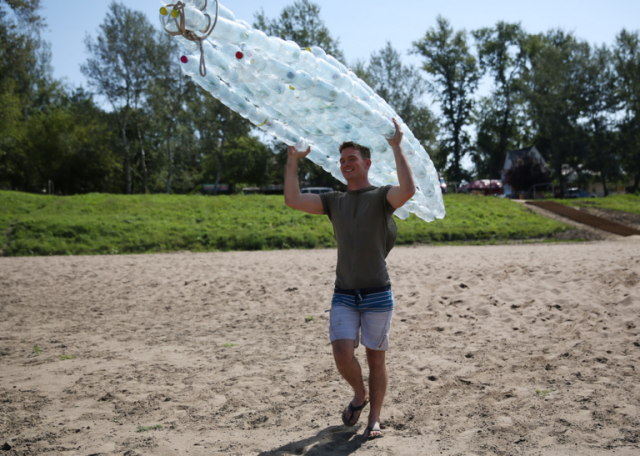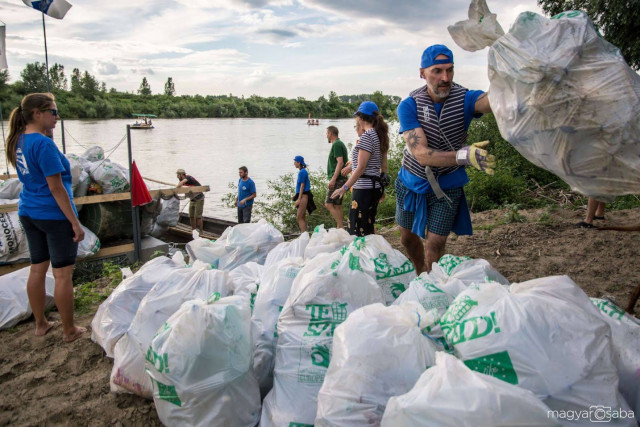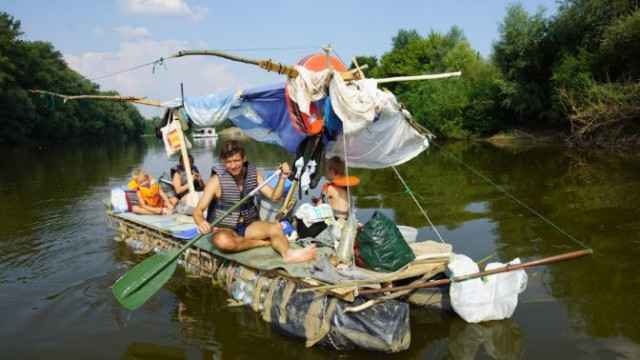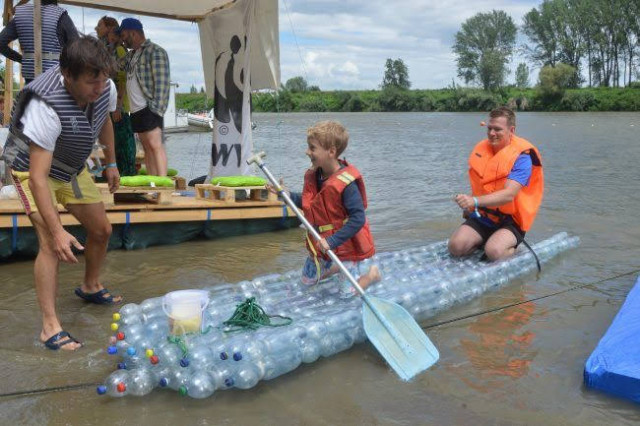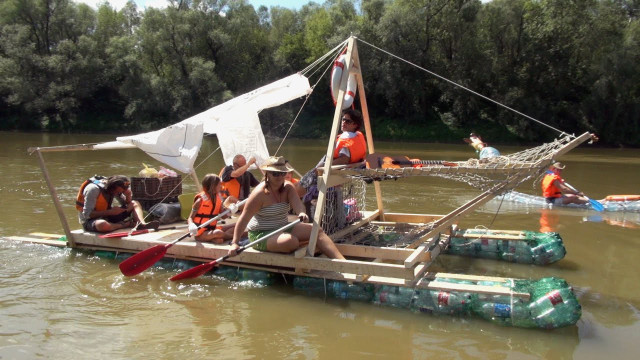Turning Trash into Triumph: The Story of the PLASTIC Cup
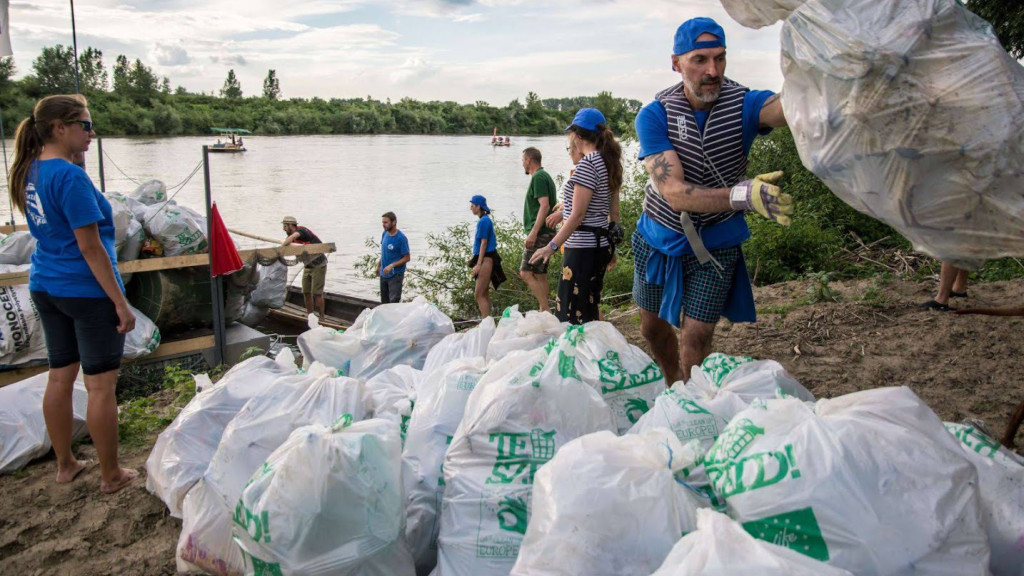
Discover how an extraordinary boat race using discarded plastic has become a symbol of hope and action in the fight against pollution. Supported by the ICPDR, this remarkable initiative has removed hundreds of tons of waste from tributaries of the Danube River and inspired thousands to join the mission for cleaner waters. From its humble beginnings to becoming an EU flagship project, learn how one man's vision has transformed river cleanups into a powerful community movement.
The International Commission for the Protection of the Danube River (ICPDR) is dedicated to preserving and improving the quality of water resources across the Danube River Basin. As detailed in our 2024 Policy Guidance report, plastic pollution represents a significant threat to aquatic ecosystems and water quality. The ICPDR recognizes that plastic waste not only detracts from the natural beauty and ecological health of our rivers but also poses serious risks to biodiversity and human health. Our commitment to tackling this issue is reflected in our ongoing initiatives and strategic goals, which prioritize reducing plastic pollution and enhancing river clean-up efforts.
In alignment with our mission, the ICPDR is proud to support innovative projects such as the PLASTIC Cup initiative. By fostering partnerships with organizations dedicated to environmental stewardship, we aim to promote community engagement and raise awareness about the impact of plastic waste. The PLASTIC Cup’s unique approach — transforming plastic waste into functional and symbolic vessels for river clean-up — demonstrates a proactive and creative response to one of the most pressing environmental challenges of our time. Through this joint effort, we seek to drive collective action, inspire change, and contribute to a cleaner, healthier, and safer Danube River Basin for future generations.
In recent years, the PLASTIC Cup (PET Kupa) initiative has removed approximately 400 tons of plastic and other waste from the tributaries of the Danube. Preventive measures have also stopped over 1,000 tons of waste from entering the rivers. Thousands of volunteers from five countries have participated in hundreds of river clean-up actions. Recognized as one of the EU's flagship projects, the PLASTIC Cup is celebrated as one of the most innovative river cleanup campaigns. We spoke with Attila Dávid Molnár, the founder of this non-profit association, to learn more about how it all began.
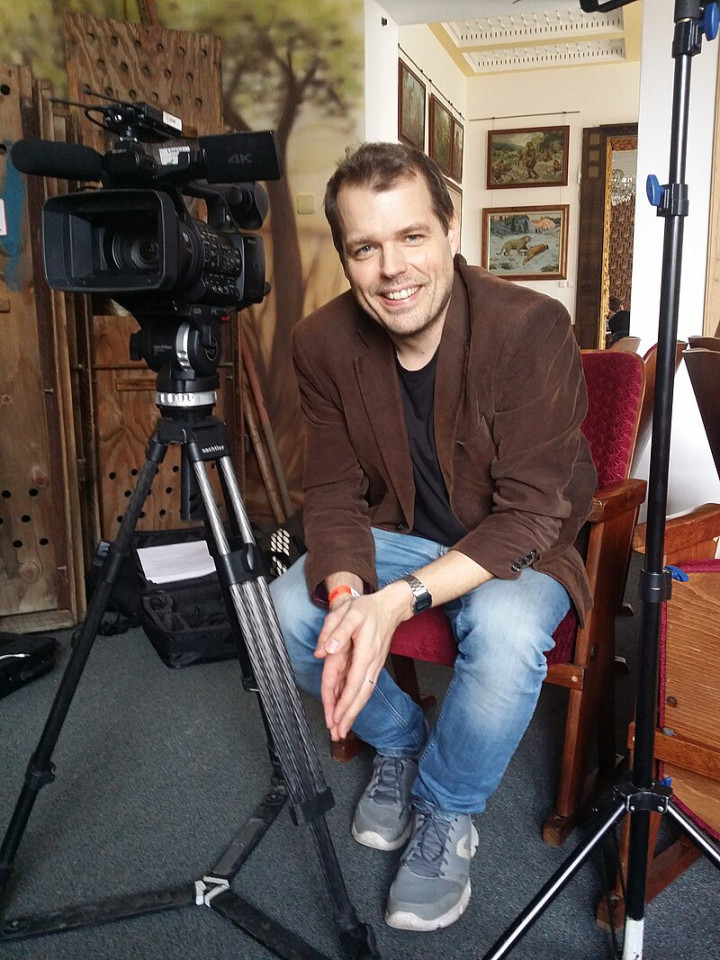
"Not a good idea. We should not set sail. Our kids, the dog — the whole family... Aboard a ship built of garbage?" my wife asked. I looked at my little family: my son, barely two years old; my daughters, not yet 10; and Kamilla, the omnivorous Labrador, who weighed even more than I did. We were about to board a boat made from 600 used plastic bottles. Our only protection from storms and the scorching sun was a small tent, and our propulsion consisted of old keelboat oars and four long wooden oars. It was 2013, and the next day marked the start of the first Tisza PLASTIC Cup. I remember wondering if I should listen to my wife and turn back. She is usually right, and the temptation was strong, but something inside me resisted. I felt this was the best idea I would ever have.
To clarify, I did not invent the concept of building boats from plastic bottles. Fishermen in impoverished parts of the world have done this out of necessity for decades. In 2010, a catamaran named Plastiki, built from 12,000 PET bottles, crossed the Pacific Ocean. My vision was to transform river cleaning into a community-building and team-building program. I imagined a water festival that reduces waste, leaving a cleaner river, and a living space free of plastics, as well as a boat race. This vision was inspired by seeing the Tisza River covered in plastic during a 2008 flood. I couldn't believe my eyes; I thought such pollution was only possible in Asia. Hundreds of plastic bottles and other waste arrived every minute. When I asked the locals, they said it was "normal." The people of Tisza have experienced a great deal of trauma, from surreal levels of industrial pollution during Soviet times to a severe cyanide spill from Romania in 2000 that devastated fishing and tourism. They had lost hope, but I hadn't.
My original profession is nature filmmaking. I went to the flood with a camera, initially to document the threatened nests of sand martins. When I saw the pollution, I knew I had to make a film about it, but I wanted to do something different from the usual educational, dramatic, or finger-pointing films. At that time, my wife and I attended a book club where parents with young children tried to squeeze in a few pages of reading between their parental duties.
"I just came from the most boring river trip of my life," reported Tibor, a book club member. "Instead of a canoe, we went on a plastic bottle boat built by a friend of mine." "What's your friend's name?" I asked. "Uncle Pici."
Within days, I met Uncle Pici, and within weeks, the script for the film was born. According to the script, teams would build boats out of waste to compete in cleaning the river. Since it was an official boat race, we needed a trophy to award to the winners. Inspired by the America's Cup, we called it the PLASTIC Cup. The film crew assembled, the plastic bottle boats were built, and everyone gathered on the riverbank. I looked at my family and was sure there was nobody else I wanted to take on this adventure with. I knew it was dangerous, but I was hopeful everything would work out. I stepped onto the boat, my family followed, and we set off. Thus, the PLASTIC Cup was born.
